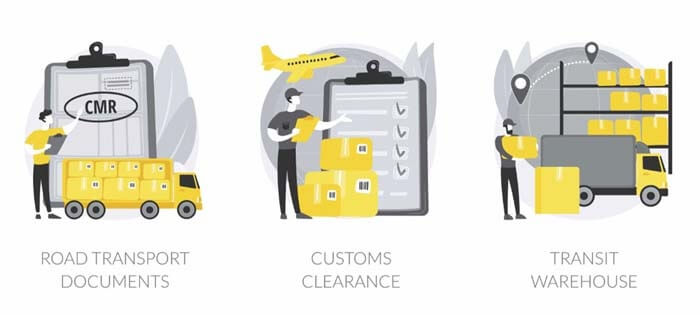IMO Shipping is nationally seen as an industry because cargo transportation is economically and environmentally friendly, and also because it serves the vast majority of world trade by merchant ships.
An industry this large and large has needed an organization such as universal management, standards and regulation. IMO, which is the International Maritime Organization in English and the Turkish equivalent of the International Maritime Organization, was established with a convention accepted in Geneva on March 17, 1948 to meet this need. The formation structure of this organization consists of an assembly and a main council, five main committees and sub-committees that support the work of these main technical committees. As of November 2009, IMO has 169 member states and 3 associate members. Acting as the governing body of the IMO, the assembly meets every two years. It is present in the council, which is elected by the Assembly and consists of 40 member states.
We can explain the aims of the International Maritime Organization in its most succinct form, with the organization’s motto: ‘Basically, it sets policy for international shipping, discourages compromising safety, security and environmental performance to address shippers’ financial concerns, and promotes innovation and, finally, efficiency.
IMO creates a convention, and when any government ratifies that convention and joins the organization, the policies provided by IMO become a universal law and agree to apply those laws. (International Maritime Organization)
DGR Form (Dangerous Goods Form)
IATA is one of the codes used in air transport and is assigned by its own institution, IATA. Its abbreviation is International Air Transport Association and its Turkish equivalent is International Air Transport Association.
DGR, which stands for Dangerous Goods Regulations, is referred to as Dangerous Goods Regulations. These are the international rules that specify the quantity, packaging and transportation conditions of all kinds of dangerous goods to be transported by airways.
In 1953, IATA member airlines determined that the demand for air transport of all kinds of substances and materials increased and as a result of the increase, if everything carried was not controlled, it could seriously affect the safety of passengers, flight crew, aircraft and other transported materials. As a result, the first “IATA Dangerous Goods Regulations” book was published in 1956 by evaluating all kinds of materials, quantities, packaging and transportation conditions with the available data.
The DGR form content is as follows:
- Applicability: Includes carrier and operator responsibilities, but covers training, safety and incident reporting.
- Limitations: Covers prohibited and confidential goods, storage and transportation quantities.
- Classification: Contains the classes in which dangerous substances are found. For example explosives, gases, flammable, poisonous, corrosive etc.
- Packaging Instructions: It covers the packaging group of the dangerous goods given in the classification.
- Packaging Specifications: Includes construction and testing.
- Documents: Shipper’s declaration, Air waybill
- Transport: Storage, loading, inspection, information provision, reporting, training, document storage
- Radioactive Material: Handling, limitations, classification, identification, packaging, testing, labeling, documentation, handling.
This DG form, together with the attachments required by the form, must be kept for 3 months by both the sender and the carrier.
Bill of Lading
The bill of lading, known as Bill of Lading (BoL) in English, is a necessary document for moving a freight shipment. It acts as an agreement and/or a title document between the shipping company and the shipper. A bill of lading is a legal document that provides the driver and carrier with the details needed to process and properly invoice the shipment of the cargo.
Bill of lading represents the goods receipt. Shipments cannot be made without a bill of lading.
The bill of lading covers the role of ownership of the goods. When the goods arrive at the destination, the Bill of Lading acts as a deed.
The bill of lading also guarantees payment to the sender. In some cases, the sender may keep the original invoice until they receive the payment. By doing this, the buyer cannot access their goods until payment is made and the Bill of Lading is released.
There are 3 types as CMR (Land Transport Bill), AWB (Air Transport Bill), and Sea Transport Bill.
Bill of lading types are basically examined in 2 different groups in sea transportation and they show diversity within themselves.
- Bills of Lading Used on Scheduled (Liner) Travel
- Regular Line Bill of Lading (Liner Bill of Lading)
- Container Bill of Lading
- Combined Transport Bill of Lading (Multimodal Bill of Lading)
- Single Bill of Lading (Through Bill of Lading)
- Freight Forwarder Bill of Lading:
- Tanker Bill of Lading
- Bills of Lading Used on Non-scheduled Flights:
- Received Bill of Lading
- Shipped Bill Of Lading
- In a bill of lading;
- Names and addresses
- Purchase orders or special reference numbers
- Special instructions
- History
- Description of Items
- Packaging Type
- NMFC (National Ground Cargo Classification)
- Ministry of Transport Dangerous Goods Definition
- and these bills of lading must be kept for 5 years according to Australian Customs.
